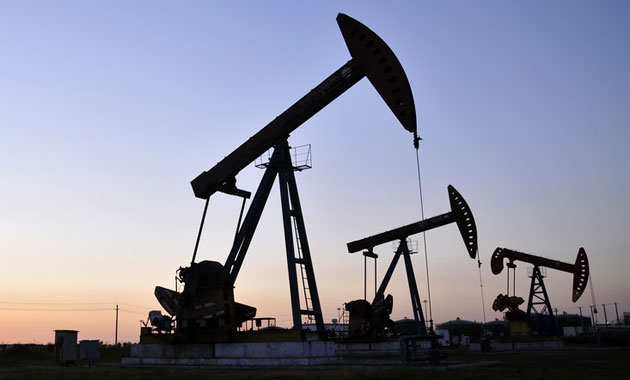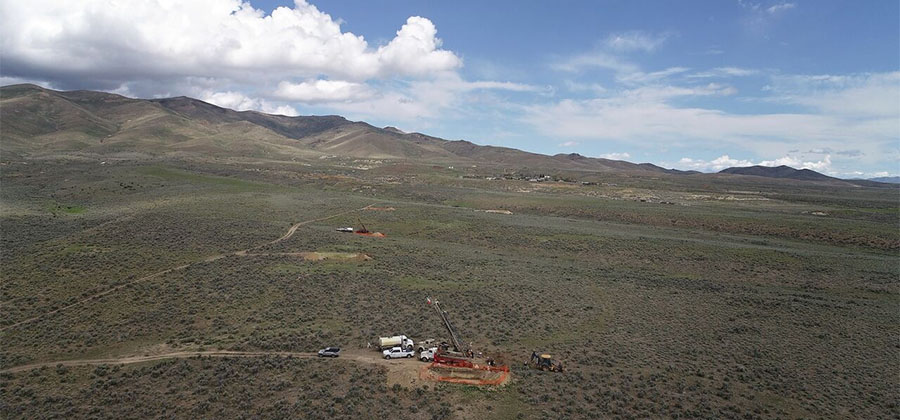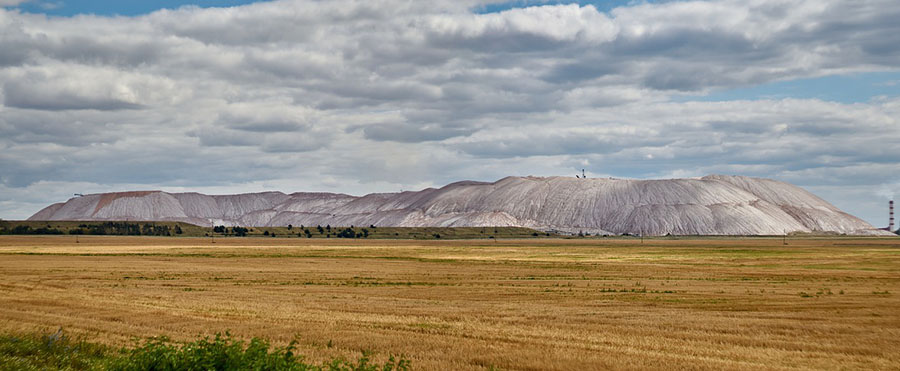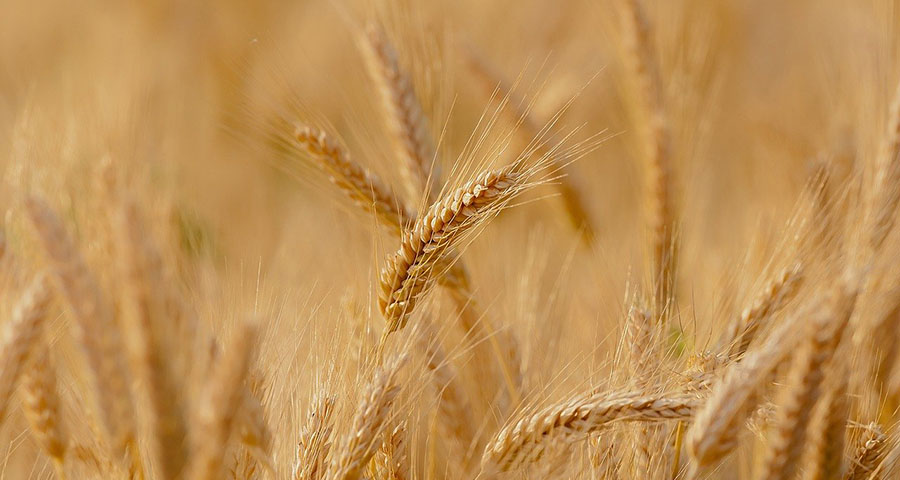In the spring, Mackie Research Capital featured an article on Streetwise Reports that commented on the disconnect between the strong recovery in the price of oil and lack of response by most energy stocks. With valuations near unprecedented lows, Mackie highlighted oil and gas stocks that are fundamentally undervalued and well positioned for when valuations revert to the norm. Two of Mackie top picks that have multi-bagger return potential from the current levels have recently announced exciting updates that could unlock substantial additional upside for investors.
Prairie Provident Resources Inc. (PPR:TSX) announced a very positive drilling update at its Princess core area, with two new wells each producing at ~900 boe/d and a third exploration well testing ~770 boe/d. These are boomer wells which are on track for three-month payouts making them of some of the best performing non-resource oil producing wells in Alberta. In addition, PPR has a potential significant cash windfall coming from a Quebec settlement that positions the stock for a rerate.
"We believe PPR is a takeover target given it current valuation and significant asset base." -- Bill Newman, October 23, 2018
On October 23, 2018, Mackie Research reported, "With the recent consolidation within the energy sector and very few IPOs, the number of oil and gas companies with significant production, reserves and cash flow has declined. We believe PPR is a takeover target given it current valuation and significant asset base that is material to a potential acquirer."
Subsequent to the completion of the Marquee acquisition, PPR will be a larger, undervalued company which we believe puts a bulls eye on the company. In addition, with a larger cash flow and opportunity base, PPR has more flexibly to allocate capital to projects with the highest potential return. We reiterate our BUY recommendation on the immediate production and cash flow growth potential from the current drilling program at Evi, and long term growth potential through the exploitation of the company's inventory of lower risk development oil locations and expanding water flood programs. At the current market price, we also believe PPR is a takeover target," the report noted. Further details are available here.
The week prior, a Mackie Research report headlined "Crazy Cheap With 2P Reserves Valued at $3.25/share; Cheap Acquisition Boosts Cash Flow & Opportunity Base" reported that "Prairie Provident completed the announced bought-equity financing of 3.8 million flow-through shares and 9.6 subscription receipts for total gross proceeds of $5.5 million. The acquisition of Marquee Energy Ltd. is expected to close in November. PPR will be a much larger company which ~7,700 boe/d (an increase of ~34%) and 2P reserves of 42.2 million boe (increase of ~110%) and will have a large inventory of development locations to fuel lower risk production growth for many years. PPR also announced that its credit line will be increased to US$65 million, with ~US$21 million undrawn, providing additional financial flexibility. We reiterate our BUY recommendation and our $2.00 target." More details are available here.
Prairie Provident is focused on the development of its conventional oil weighted assets in the Wheatland and Princess properties in Southern Alberta and its Evi area located in the Peace River Arch area of Northern Alberta. PPR also holds ~240,000 net acres in the St. Lawrence Lowland of Quebec that are prospective for the Utica Shale. The company remains highly undervalued on a cash flow, reserves and NAV basis and receives no option value for its Quebec assets. In addition, with the recent drilling success at its Princess core area, production has increased to over 6,000 bbl/d (~75% liquids).
Three Boomer wells at Princess: Year to date, PPR has drilled a total of five wells in the Princess area, all successful. The three most recently drilled wells are boomers, which are on track for three-month payouts. The 100/13-24-20-11W4 well ("13-24") continues to exceed expectations with an average rate 940 boe/d (75% liquids) in July. The 13-24 well is one of best performing non-resource oil producing wells in Alberta. The 102/13-26-20-11W4 follow-up well was recently placed on production at a constrained rate of 900 boe/d (85% liquids) and we expect this too will be one of the best non-resource oil wells in Alberta. PPR also drilled the 103/14-12-019-11W4 exploration well targeting a new Glauconite channel, which flow tested at an initial rate of 770 boe/d (56% liquids) and was very recently placed on production. PPR has multiple follow up locations to drill, which could build production prior to year-end.
Potential Cash Windfall from Quebec Settlement Could Rerate the Stock: PPR is seeking damages of US$188.9 million related to the termination of the rights to one of the company's licences in Quebec. The final hearing concluded in November 2017 and a ruling in the dispute and potential damages could be announced in H2/18. Over a five-year period PPR committed a significant amount of time and capital to securing the exploration licences, acquiring and interpreting seismic and drilling wells. We feel damages of between US$25 million to US$60 million would certainly be in the realm of possibility. Damages at the low end of this range would allow the company accelerate growth through drilling or acquisitions, and could re-rate the stock.
Prairie Provident Resources' (PPR:TSX) Value Highlighted by Similar Acquisition
On September 6, Surge Energy Inc. (SGY:TSX) announced the acquisition of privately held Mount Bastion Oil and Gas Corp. (MBOG) for total consideration of C$320 million. Bill Newman of Mackie Research provided the following comparison of Mount Bastion to Prairie Provident Resources Inc. (PPR:TSX): "With ~5,500 boe/d of production and 25 million boe of proven plus probable reserves (2P), MBOG and PPR and have similar sized assets. Based upon the acquisition cost price of $320 million, this infers a value of $2.13 per share for PPR. Given that MBOG's asserts are 98% weighted to light oil, and generate higher netbacks, we calculate an adjusted value for PPR in the range of $1.31 to $1.96/share.
"Both companies are producing ~5,500 boe/d, and MBOG has slightly large 2P reserves of 25 million versus PPR’s 21 million boe. Surge pays $58,182 per flowing boe, $12.80/boe for 2P reserves and a net operating income multiple of 3.8x. At the current market price PPR is trading at only $22,557 per flowing barrel and an EV/2P reserves value of $5.97/boe. We note that MBOG has a higher percentage of oil production at 98% versus PPR's 70%. As a result, we have adjusted our valuation based on operating income. A net operating income multiple of 3.8x values PPR at $1.01 per share, which is a 132% premium to the current stock price. PPR's 2P reserves at $12.80/boe value PPR at $1.66/share or a 282% premium to the stock price. Including a conservative potential value a favorable ruling from the arbitration tribunal, expected in H2/18, our valuation increases to $1.31 to 1.96/share.
"We reiterate our BUY recommendation and our $2.00 target."
POINT LOMA RESOURCES LTD – PLX – TSX-V
Point Loma Resources Ltd. (PLX:TSX) announced on July 25, 2018, two exciting new Banff oil pool opportunities, captured on company lands, that are on trend with other significant Banff oil pools that hold an average of 62 million barrels (mmbbls)of original oil in place (OOIP). PLX expects to drill a horizontal well targeting its Banff opportunities in Q4/18 that could be a game-changer for the company while also having a sizeable stake in the Duvernay Shale oil play that continues to evolve in PLX's area of operations.
Both PPR and PLX have a large inventory of low cost Mannville drilling locations that form the bases for years of low risk steady growth production, and both companies have upcoming near-term events that could be transformational and game-changers for the stocks.
PLX is highly undervalued (trades well below its 1P reserves value with the value of the company backstopped by its Mannville producing assets alone) and has a large concentrated land base (over 250 net sections) and deep multi-zoned drilling inventory to fuel growth. Production has recently increased to over 1,000 boe/d with an additional ~200 boe/d expected in Q4/18, from low risk well reactivations. In addition, during the second half of 2018, PLX plans to drill two to three high impact horizontal wells, including an exciting new Banff Oil play that has significant multi-bagger upside for the company as a standalone new play.
Two Potentially Large Banff Oil Opportunities with Big Upside: Based upon the new 3D seismic data and combined with bypassed pay and oil shows in company owned wells, PLX identified two well-defined, Banff oil pools that are on trend with other significant Banff oil pools in the area. Five offsetting Banff pools have large OOIP ranging from 22 to 91 mmbbls of oil, with an average in place resource of 62 mmbbls. Most of the offsetting Banff pools were discovered many years ago and have been exploited primarily with vertical wells, utilizing outdated technology.
Based upon OOIP resource of between 25 to 75 mmbbls, we calculated a mean potential net value of $40.0 million ($0.66/sh) per Banff oil poolwith an upside case of $135 million ($2.24/sh) per Banff oil pool. In Q4/18, PLX plans to utilize the latest proven technology to drill a horizontal well targeting its Banff oil opportunities. The opportunities are located near to the company's Paddle River production facilities, which should allow quick on-stream time. Success would be a significant game-changer for the stock, which trades at the $0.28/share level currently, with investors able to get in today far below management and the company's strategic insiders, which have an average cost base of $0.55/share.
Free Option Upside from its 12,500 net acres in the Duvernay Shale Oil Play: PLX has established ~12,500 acres (~20 net sections) of land within the Duvernay oil shale window. Industry interest in the Duvernay has been heightened by impressive initial oil weighted production tests results from the likes of Artis Exploration (Private), Vesta Energy (Private) and Crescent Point. As a result, land prices continue to escalate in the oil window of the Duvernay. As the Duvernay shale play continues to evolve, we believe that PLX lands holdings provide significant optionality to farmout, swap or even outright sell the acreage. There is no value for the Duvernay oil shale play reflected in the current stock price, which we consider a free options for investors.
Bill Newman is vice president of international and domestic oil and gas research with Mackie Research Capital Corp. He has been an energy analyst for 22 years. He holds a bachelor's degree in commerce from the University of Calgary, and has a CFA designation.
[NLINSERT]Disclosure:
1) Bill Newman: I, or members of my immediate household or family, own shares of the following companies mentioned in this article: None. I personally am, or members of my immediate household or family are, paid by the following companies mentioned in this article: None. My company has a financial relationship with the following companies mentioned in this article: Within the last two years, Mackie Research Capital has managed or comanaged an offering of securities for, and received compensation for investment banking and related services from Prairie Provident Resources Inc. and Point Loma Resources Ltd. Bill Newman has research coverage on the following companies mentioned in this article. Prairie Provident Resources Inc. and Point Loma Resources Ltd. Relevant disclosures required under applicable to companies under coverage discussed in this article are available on our web site at www.mackieresearch.com. I was not paid by Streetwise Reports for writing this article. I determined which companies would be included in this article based on my research and understanding of the sector.
2) The following companies mentioned in this article are billboard sponsors of Streetwise Reports: None. Click here for important disclosures about sponsor fees. An affiliate of Streetwise Reports is conducting a digital media marketing campaign for this article on behalf of Prairie Provident. Please click here for more information.
3) Statements and opinions expressed are the opinions of the author and not of Streetwise Reports or its officers. The author is wholly responsible for the validity of the statements. The author was not paid by Streetwise Reports for this article. Streetwise Reports was not paid by the author to publish or syndicate this article. The information provided above is for informational purposes only and is not a recommendation to buy or sell any security. Streetwise Reports requires contributing authors to disclose any shareholdings in, or economic relationships with, companies that they write about. Streetwise Reports relies upon the authors to accurately provide this information and Streetwise Reports has no means of verifying its accuracy.
4) This article does not constitute investment advice. Each reader is encouraged to consult with his or her individual financial professional and any action a reader takes as a result of information presented here is his or her own responsibility. By opening this page, each reader accepts and agrees to Streetwise Reports' terms of use and full legal disclaimer. This article is not a solicitation for investment. Streetwise Reports does not render general or specific investment advice and the information on Streetwise Reports should not be considered a recommendation to buy or sell any security. Streetwise Reports does not endorse or recommend the business, products, services or securities of any company mentioned on Streetwise Reports.
5) From time to time, Streetwise Reports LLC and its directors, officers, employees or members of their families, as well as persons interviewed for articles and interviews on the site, may have a long or short position in securities mentioned. Directors, officers, employees or members of their immediate families are prohibited from making purchases and/or sales of those securities in the open market or otherwise from the time of the interview or the decision to write an article, until one week after the publication of the interview or article.





























































